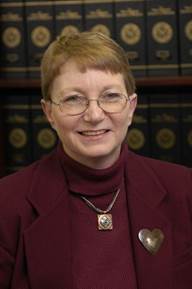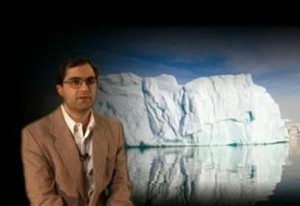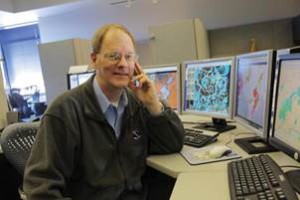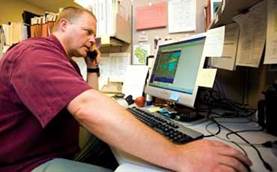-

Gary Cannalte
Chief Meteorologist, WISC TV Madison, WI
-

Mary Ann Cooper, MD
Mary Ann Cooper, MD, Professor Emerita of Emergency Medicine, retired from the University of Illinois at Chicago (UIC) in 2008. As a professor at UIC, she held additional faculty appointments in the Neurology and Bioengineering Departments. Dr Cooper received her medical degree from Michigan State University and completed her residency in emergency medicine at the University of Cincinnati. As an early leader in emergency medicine, Dr Cooper participated in writing the initial training and accreditation standards for training in the specialty of emergency medicine, was an oral board examiner for over a decade, held fellowships in several emergency medicine organizations and was the first woman to be elected president of a national society in emergency medicine.
At UIC, in addition to practicing clinical emergency medicine for two decades, Dr. Cooper directed the Lightning Injury Research Program which was active in basic and clinical research, education and lightning injury prevention. A Dr. Cooper has been active with the Lightning Strike and Electric Shock Survivors, International support group since its inception and serves on its Board of Directors’ She is the acknowledged international medical expert on lightning injuries and injury prevention.
As a result of her work in lightning injury prevention, Dr. Cooper was the first physician to be elected a Fellow of the American Meteorological Society (2003 – an honor accorded by the AMS constitution to <0.3% of AMS membership), and received an AMS Special Award for her medical studies of lightning victims (2001). Dr. Cooper was a trainer for the National Weather Service of NOAA, serves as an original member of the NOAA National Lightning Awareness Week (NLAW) working committee, and works with broadcast meteorologists around the world to raise public awareness and decrease lightning injuries. She has given hundreds of interviews to print, broadcast and now internet media over the past thirty years.
She has also mentored students from the third grade to post-graduate studies from all over the world as they pursue their interests in lightning and she regularly networks them to her colleagues in the lightning community of physicists, engineers, meteorologists and others. In her retirement, she is working with multidisciplinary groups around the world to promote lightning injury prevention and serves on several international advisory boards dedicated to lightning safety education, research and injury prevention.
-

Dr. Matthew Lazzara
Associate Scientist, Space Science and Engineering Center, UW-Madison. Faculty, Department of Physical Sciences, School of Arts and Sciences, Madison College
-

Rusty Kapela
Retired National Weather Service Meteorologist.
40 years in the weather business — over 36 at the National Weather Service.
Before joining the National Weather Service in 1977, he lived and worked in Antarctica for three months — the geographic South Pole, where he arrived to find the temperature at minus 50.
-

John McLellan
Dane County Emergency Management
Career has been associated with emergency response (from the fire hose to writing standard operating procedures to strategic and long range planning for emergency and municipal agencies), specialing in the development and testing of organizational policy and procedures. Current career with Dane County’s Department of Emergency Management allows the opportunity to interact with a diverse and ever expanding group of government, non-profit, and for-profit professionals. This is the most attractive part of the job. The outcome from our interaction can come in many forms: from a one-time conversation to develop a general understanding of what “preparedness” is for an organization to the multi-year development of emergency procedures including evaluation and improvement mapping to ongoing participation on select emergency preparedness / organizational response committees.
-

Rick Kohrs
University of Wisconsin Space Science & Engineering Center (SSEC) University of Wisconsin Cooperative Institute of Meteorological Satellite Studies (CIMSS) programmer and graphic artist at the University of Wisconsin–Madison Space Science and Engineering Center. Using a software package called McIDAS and other software, Rick creates real-time global graphics and data visualization products for 3D spherical display systems.
For two decades, the University of Wisconsin Space Science and Engineering Center (SSEC) and the Antarctic Meteorological Research Center (AMRC) have been creating global, regional and hemispheric satellite composites. These composites have proven useful in research, operational forecasting, commercial applications and educational outreach. Using the Man computer Interactive Data System (McIDAS) software developed at SSEC, infrared window composites were created by combining Geostationary Operational Environmental Satellite (GOES), and polar orbiting data from the SSEC Data Center and polar data acquired at McMurdo and Palmer stations, Antarctica. Increased computer processing speed has allowed for more advanced algorithms to address the decision making process for co-located pixels. The algorithms have evolved from a simplistic maximum brightness temperature to those that account for distance from the sub-satellite point, parallax displacement, pixel time and resolution. The composites are the state-of-the-art means for merging/mosaicking satellite imagery.
-

Tim Halbach
National Weather Service – Warning Coordination Meteorologist. MKX Sullivan WI
-

Chad Woodward
Dane County AEC for SKYWARN/Dane County Emergency Management. VP-Midwest SSTRC
- VP-MidWest SSTRC
Provide volunteer support to the National Weather Service via MidwestSTRC through spotter training, damage assesment and whatever additional aide is requested.
- SKYWARN
Provide volunteer support to Dane County Emergency Manangement via radio communications with weather information during potentially life-threatening situations, while relaying that information to the National Weather Service.
Chad became involved in severe weather spotting for the National Weather Service when a then F3 tornado struck the housing development north of Belleville, Wi called “Vineyville” in 1992.
His daughters friend was sitting on a couch in their living room, when the errant tornado “spun-up” (later called the Waubesa Heights tornado).
There was no warning.
Because of his technical background Chad was aware the NWS had installed new “Doppler Radar” and he was mystified why the technology seemingly didn’t work.
Little did he know that his next actions would lead to an education that would be a life changing event.
Feeling helpless and somewhat angry, an emotional Chad called the National Weather service wondering why the Doppler Radar failed, leaving two scared kids on couch not knowing what to do.
The voice on the other end assured him that the radar was working, but it had limitations.
The next exchange went something like this….
Chad- “…wait a minute, don’t you have …spotters?, I am sure you have spotters!”
National Weather Service- “Yes we do, but we don’t have enough, would you like to become one?”
They had thrown down the gauntlet, leading to an unexpected journey.
Now Chad is dedicated to aiding the spotter program in anyway possible. As is Dale Bernstein and the rest of the Midwest team.
He mentors and trains others to become spotters as well, and the rest as they say, is history.
- VP-MidWest SSTRC